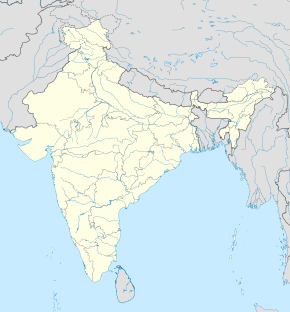Conquest of Mandaran
This article may require copy editing for grammar, style, cohesion, tone, or spelling. (March 2024) |
| Conquest of Mandaran | |||||||||
|---|---|---|---|---|---|---|---|---|---|
| |||||||||
| Belligerents | |||||||||
| Bengal Sultanate |
Gajapati Kingdom | ||||||||
| Commanders and leaders | |||||||||
| Shah Ismail Ghazi | |||||||||
Location within West Bengal | |||||||||
The Conquest of Mandaran was an important
Orissa. The expedition was primarily aimed at the town of Gar Mandaran, which had previously been under the influence of Kapilendra Deva before being captured by the earlier sultan. The expedition was led by Shah Ismail Ghazi, a prominent general of the Bengal Sultanate
who had previously led successful campaigns against neighboring kingdoms.
Background
Earlier during his reign, Kapilendra Deva led multiple campaigns against neighboring kingdoms. He also launched a campaign against Gar Mandaran, located in present-day West Bengal, capturing it during the reign of Mahmud Shah of Bengal. However, the fort did not remain under Kapilendra Deva's control for long, as it was subsequently seized by Shah Ismail Ghazi.[5][6]
The Siege
The siege was launched against the
Rukunuddin Barbak Shah
.
Orissa and the complete capture of Gar Mandaran fort.[8][9][10] Following this triumph, he pursued the Orissan forces up to Puri, where he successfully sacked the city. Ghazi's return with a considerable amount of booty and the victorious capture of Gar Mandaran fort solidified his reputation as a formidable military leader.[11][12]
Aftermath
The capture of the
Rukunuddin Barbak Shah's reign.[13]
References
- ISBN 9788176250870.
- ^ World, Mintage. "Gold Tanka of Bengal sultan Rukn al din Barbak". Mintageworld.com.
- ISBN 9788184755305.
- ^ Mukherjee, Prabhat (1981). The History of the Gajapati Kings of Orissa and Their Successors. Kitab Mahal. p. 28.
- ^ Mukherjee, Prabhat (1981). The History of the Gajapati Kings of Orissa and Their Successors. Kitab Mahal. p. 28.
- ^ Sahu, N. K. (1980). A History of Orissa. Bharatiya Publishing House. p. 385.
- ^ ISBN 978-81-7625-087-0.
- ^ Haque, Mohammed Anwarul (1980). Muslim Administration in Orissa, 1568-1751 A.D. Punthi Pustak. p. 32.
- ^ The Orissa Historical Research Journal. Superintendent of Research and Museum. 1993. p. 93.
- ISBN 978-81-7476-355-6.
- ISBN 978-984-773-006-6.
- ^ Haque, Mohammed Anwarul (1980). Muslim Administration in Orissa, 1568-1751 A.D. Punthi Pustak. p. 32.
- ^ Mondal, Sushila (1970). History of Bengal: The middle age, 1200-1526. Prakash Mandir. p. 188.


